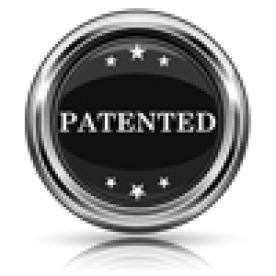Butler v. Balkamp Inc.
Decision Date: September 3, 2014
Court: Southern District of Indiana
Patents: D500,646
Holding: Defendants’ motion for summary judgment of non-infringement GRANTED Opinion:
Plaintiff Kenneth Butler, Sr. sued Defendants Balkamp Inc., National Automotive Parts Association, Genuine Parts Company Corporation, Tien-I Industrial Corporation, Limited, and Yuh Yeou Industry Co., Ltd. for infringement of U.S. Design Patent No. D500,646 (“the ’646 Patent”), entitled “Tool Handle.” The tool handle design of the ’646 Patent is intended for use with socket wrenches. Defendants specialize in replacement parts for cars and sell tool handles known as “Spinning Impact Extensions.” In response to the lawsuit, Defendants filed a motion for summary judgment of non-infringement and invalidity.
The court began its analysis by construing the claim of the ’646 Patent. Both parties and the court agreed that the drawings of the ’646 Patent disclose seven features and that two of those features—the front and rear square drive end—are solely functional. Accordingly, the five features protected by the ’646 Patent include the cylindrical extension shaft, the tapered front end, the untapered front end, the knurled handle, and the tapered back end. Beyond this discussion, the court did not give a detailed verbal description of the claimed design, but instead relied heavily on the figures in the ’646 Patent.
When considering an infringement claim, a court employs the ordinary observer test. The ordinary observer test begins with a direct comparison between the accused product and the patented design. In cases where such a comparison clearly indicates that the two designs would not appear substantially the same to the ordinary observer, the test also ends there. In cases where the accused product and the patented design are “particularly close,” however, a court will then consider the prior art to determine whether the differences in design are sufficient to avoid infringement.
Here, the court opined that the direct comparison was sufficient to determine that there was no infringement. Although there are similarities between the two products, the Spinning Impact Extension “creates a clearly distinguishable overall visual impression.” The court noted three differences between the Spinning Impact Extension and the design of the ’646 Patent.
First, the knurled pattern in the ’646 Patent extends along the entire length of the main cylindrical body while the Spinning Impact Extension has unknurled portions at each end of its cylindrical body. Second, the Spinning Impact Extension’s back end is straight-edged instead of beveled and also has a protrusion not part of the design of the ’646 Patent. Finally, the court found the extension housings to be different. The ’646 Patent shows a reduced diameter cylindrical portion, a tapered portion, and a short extension shaft. In contrast, the Spinning Impact Extension has a blunt straight-edged end with no tapered section and an extension that is much longer than the ’646 Patent. The court summarized its finding by describing the ’646 Patent as providing a “more compact and streamlined” design with smooth transitions between the main body and each end and the Spinning Impact Extension as being “boxier and sharper overall.”
Butler argued that these differences were minute. But the court responded that, although it was not necessary to consider the prior art for this case, the prior art would further support the court’s decision and counter the idea that the ordinary observer would view these differences as minute. The court listed a number of prior art references, including three U.S. design patents and five U.S. utility patents cited during prosecution of the ’646 Patent, as well as six other uncited tool handle references. According to the court, such a robust prior art selection precludes the differences between the Spinning Impact Extension and the design of the ’646 Patent from being minute in the eyes of the ordinary observer.
After concluding that the Spinning Impact Extension did not infringe the ’646 Patent, the court briefly discussed the issue of validity. The court determined that it need not reach a decision as to validity because Defendants had only raised it as an affirmative defense and not a counterclaim. In a footnote, however, the court stated that even with a proper counterclaim, whether to decide the issue of validity after concluding there was no infringement would still be in the court’s discretion.
Accordingly, the court granted Defendants’ motion for summary judgment of non- infringement and did not address the issue of validity of the ’646 Patent.





 i
i


